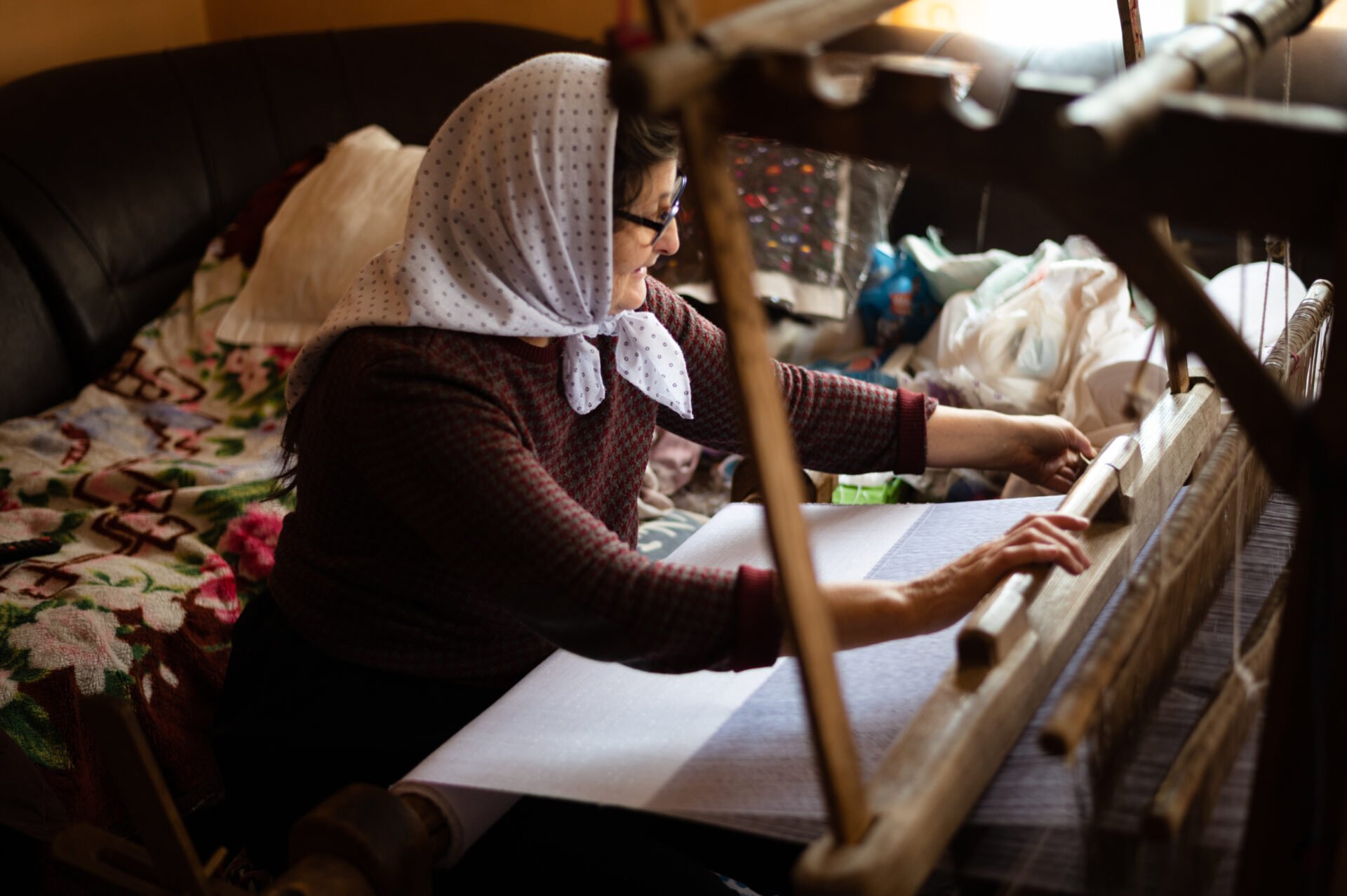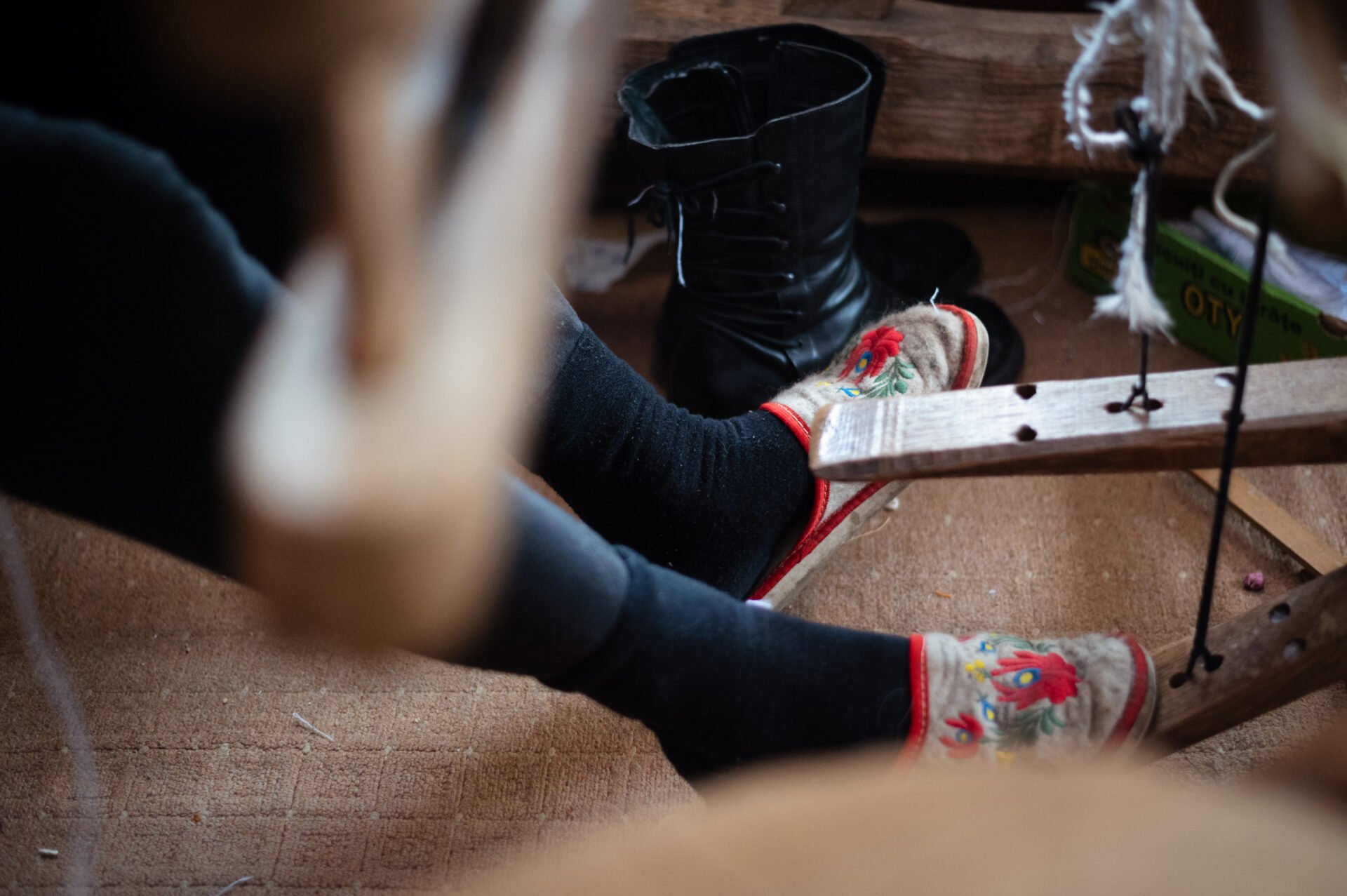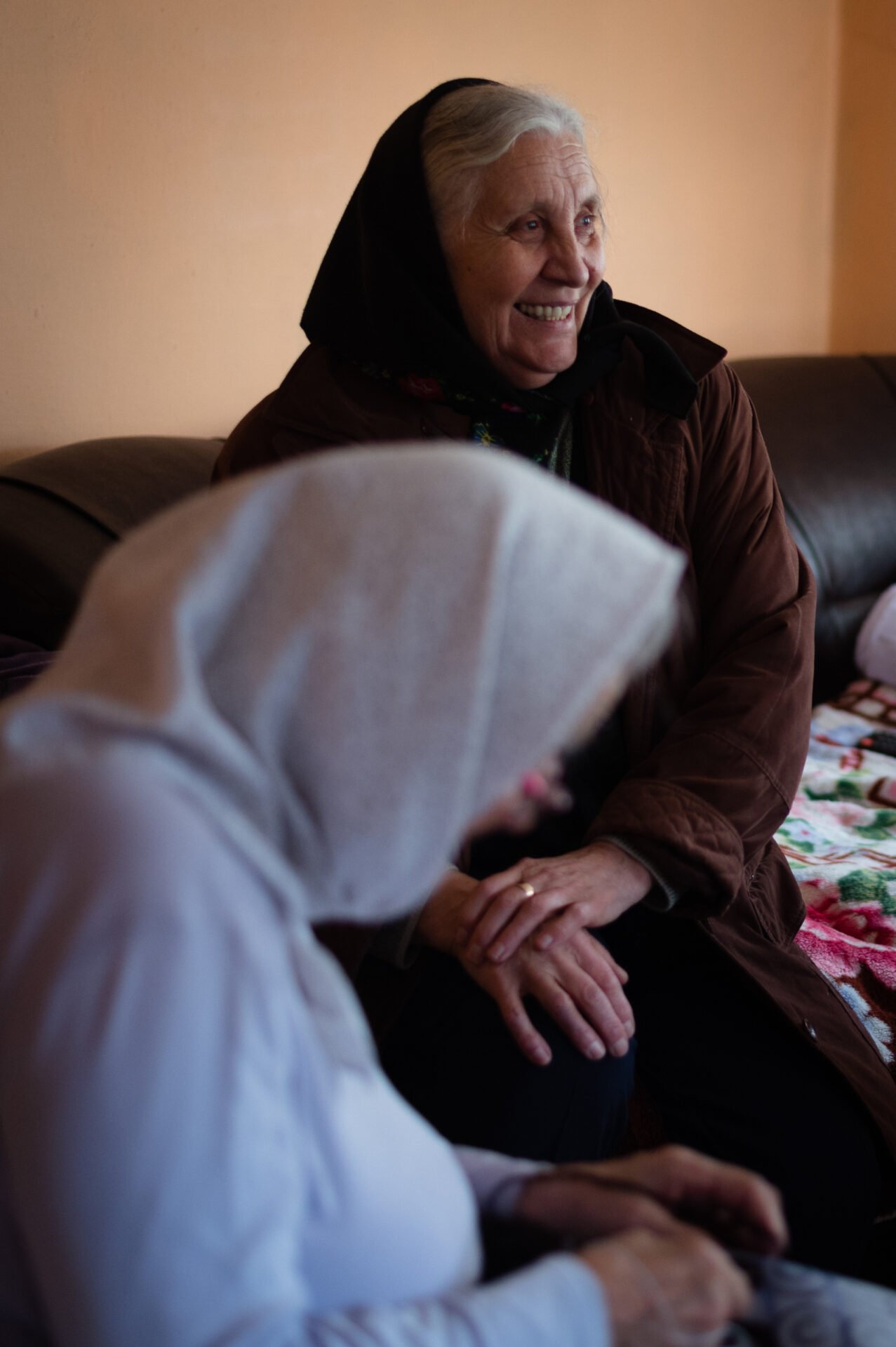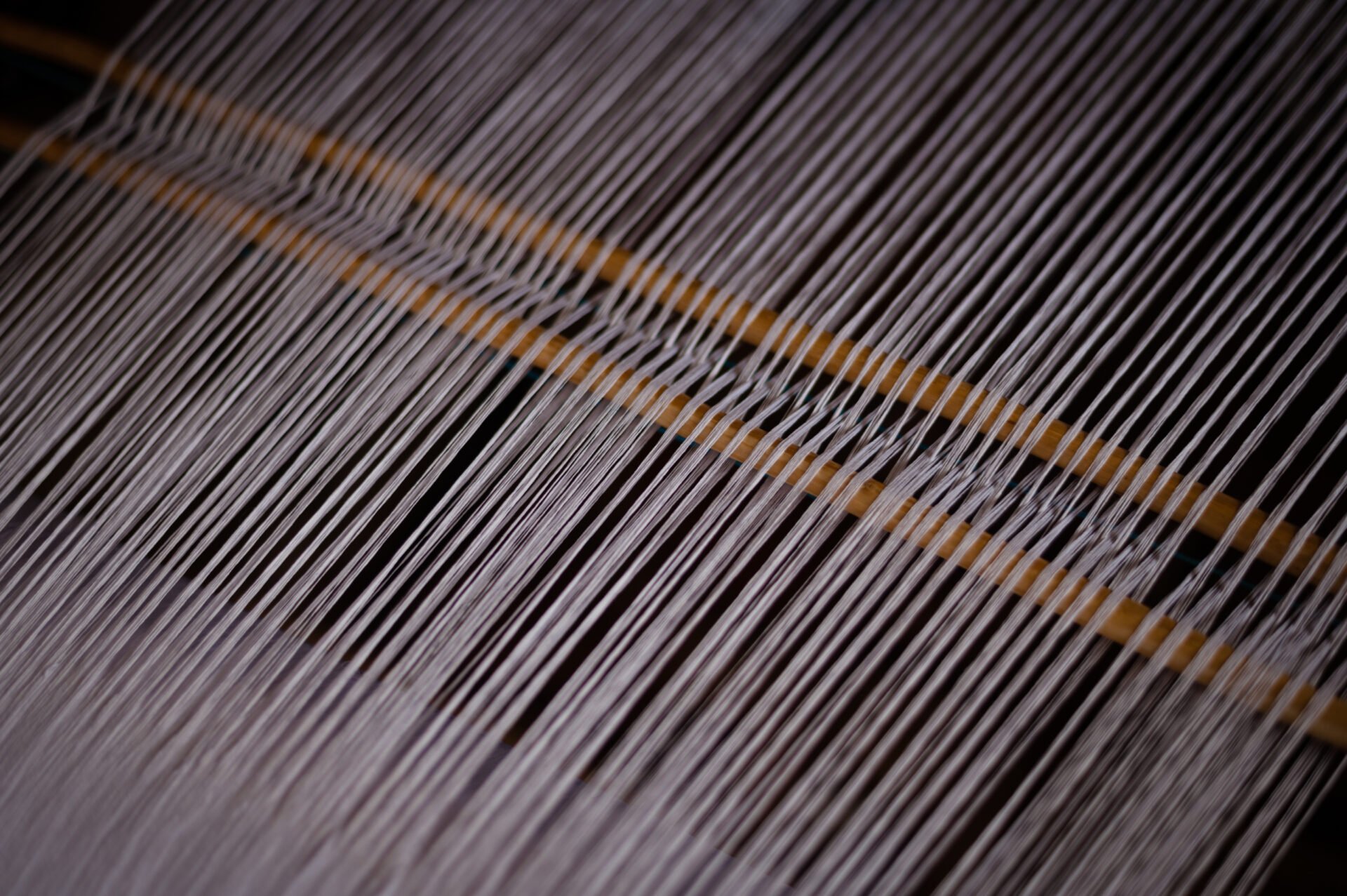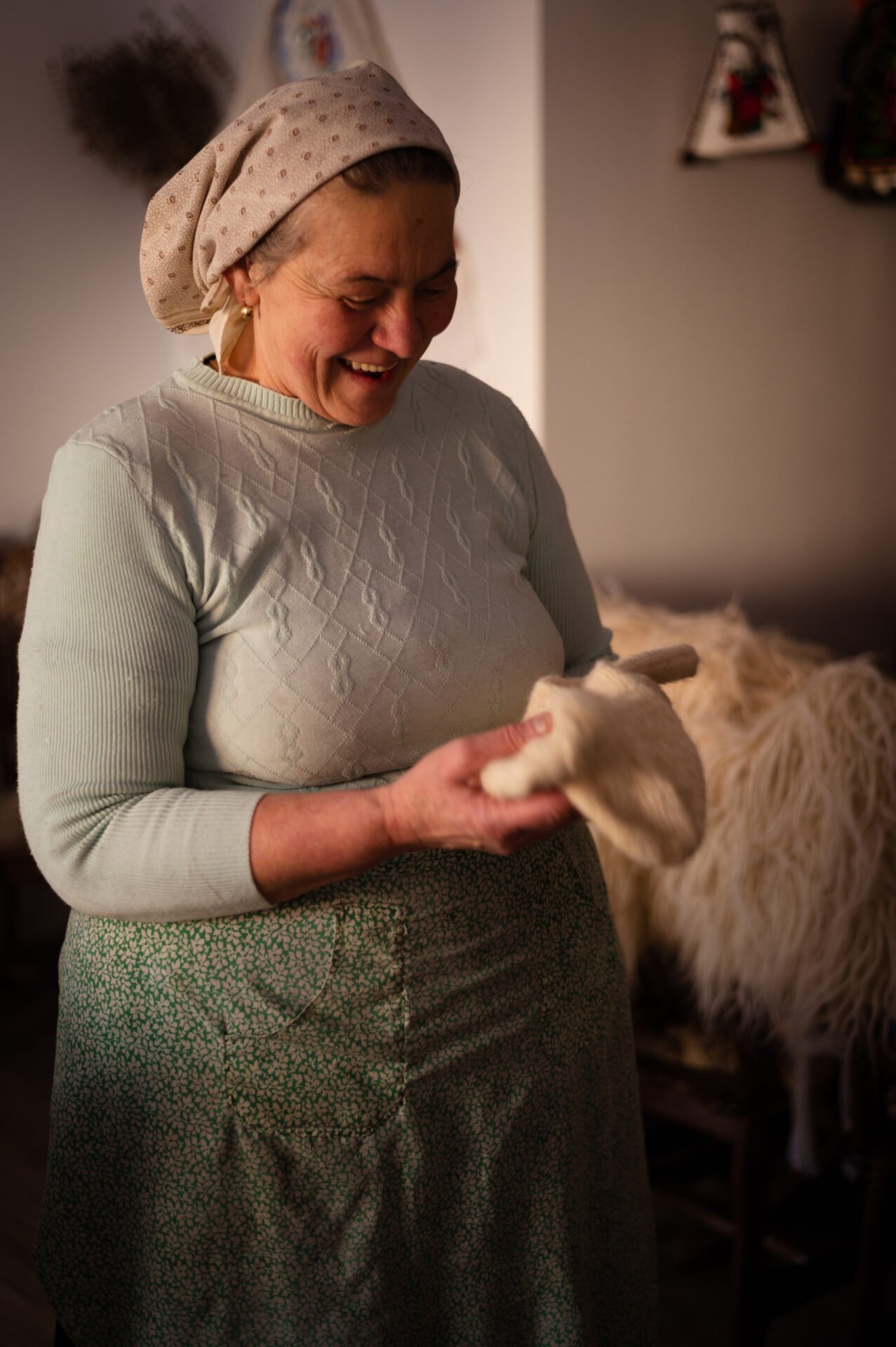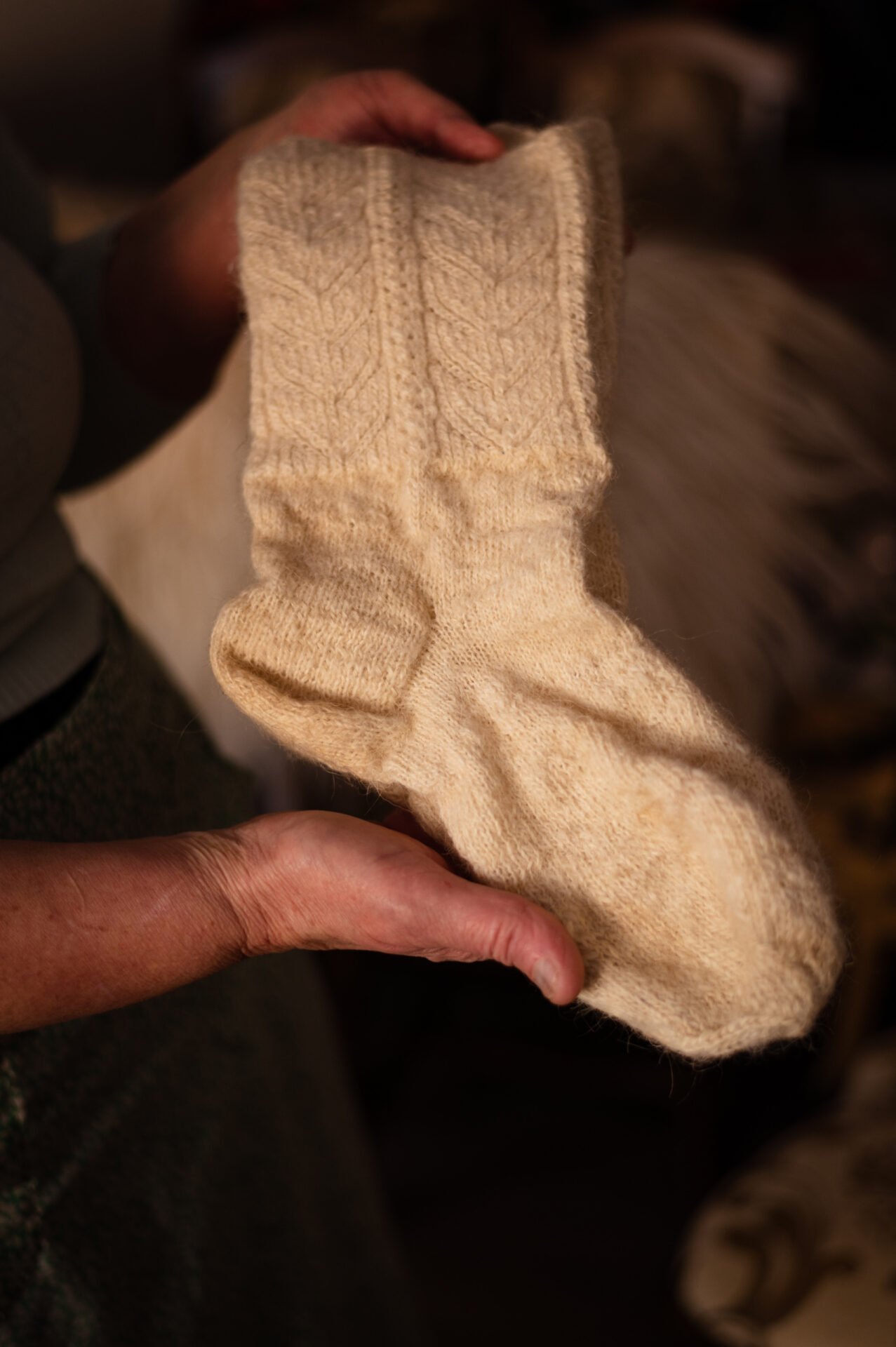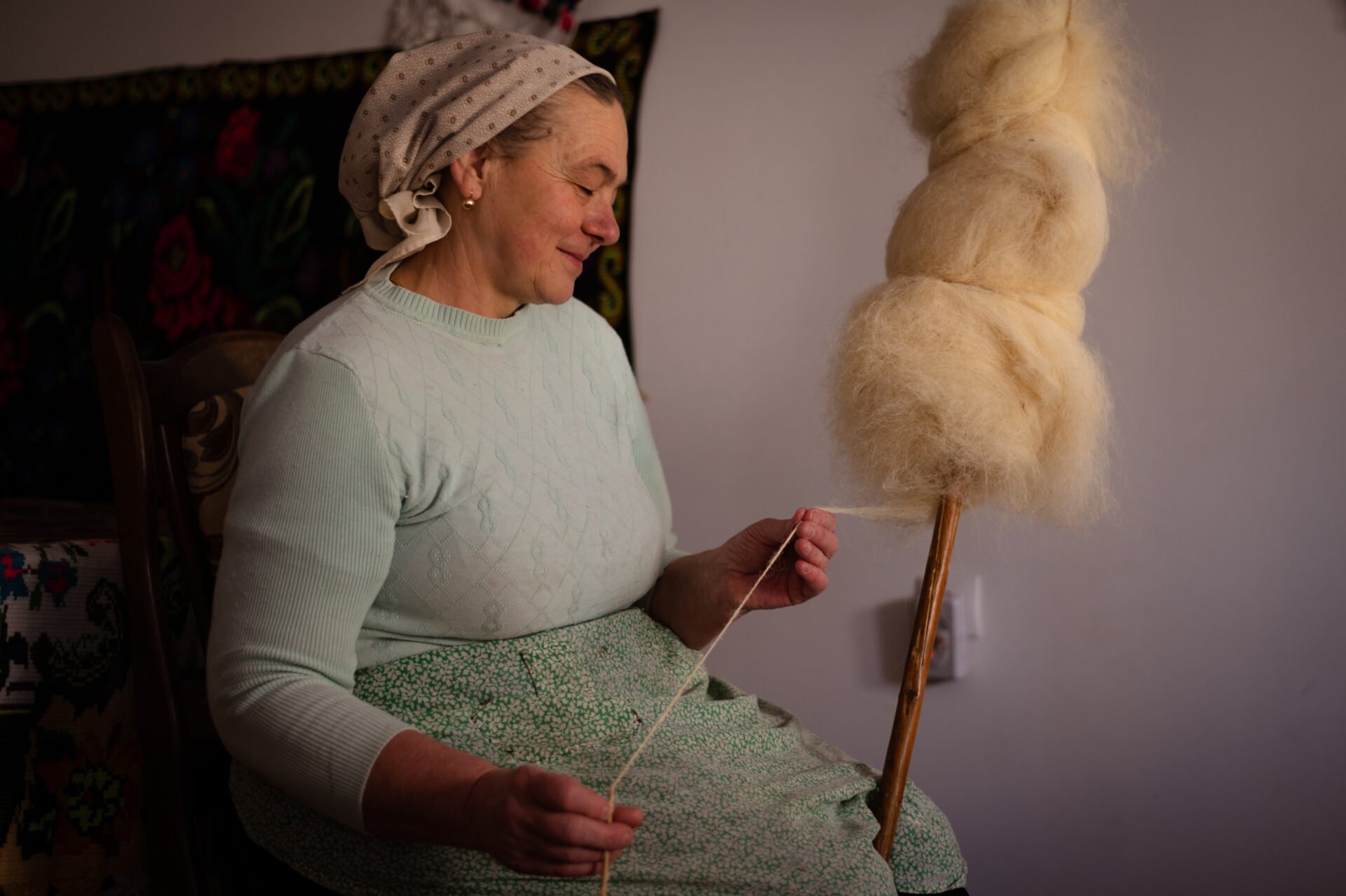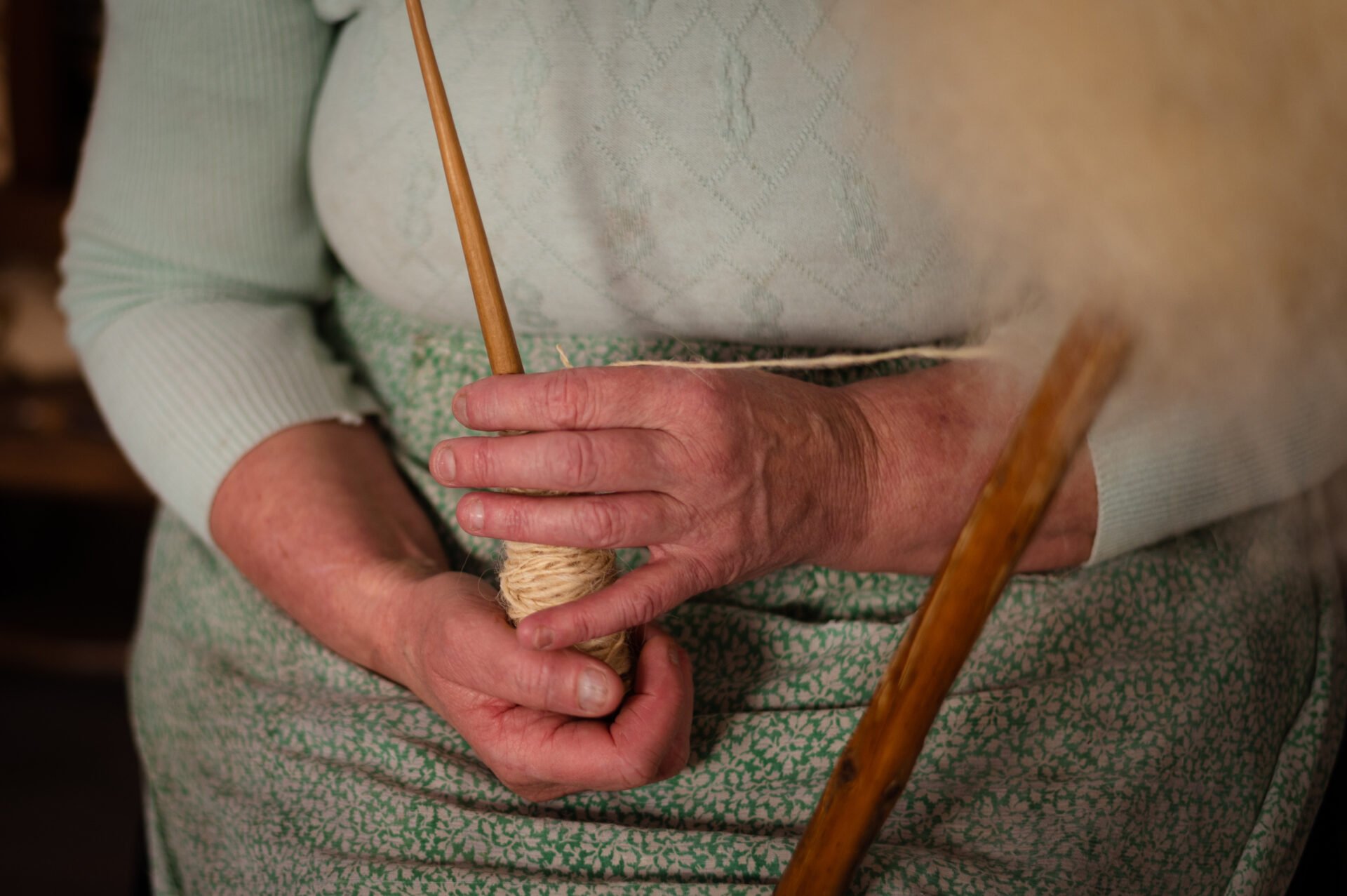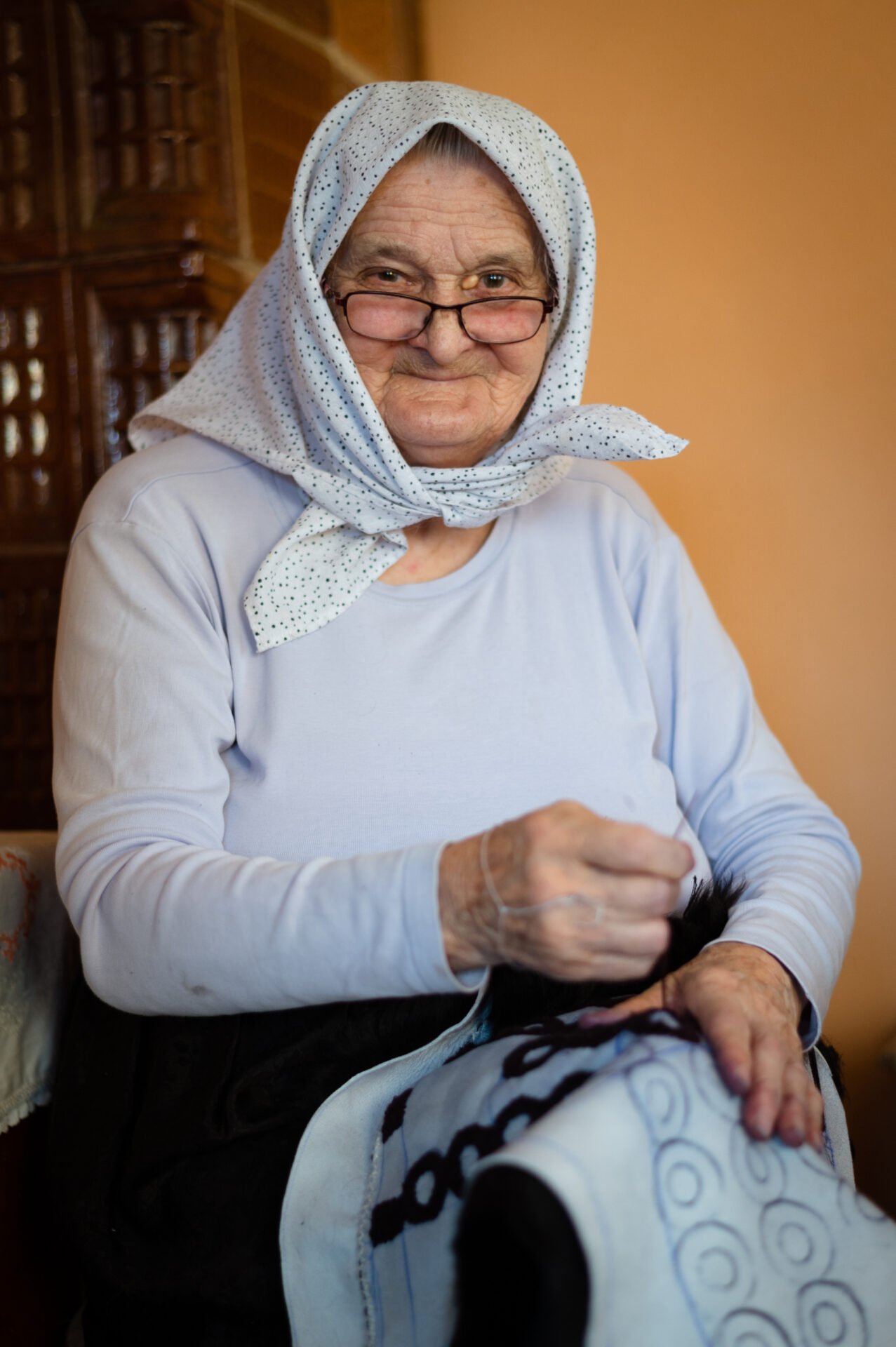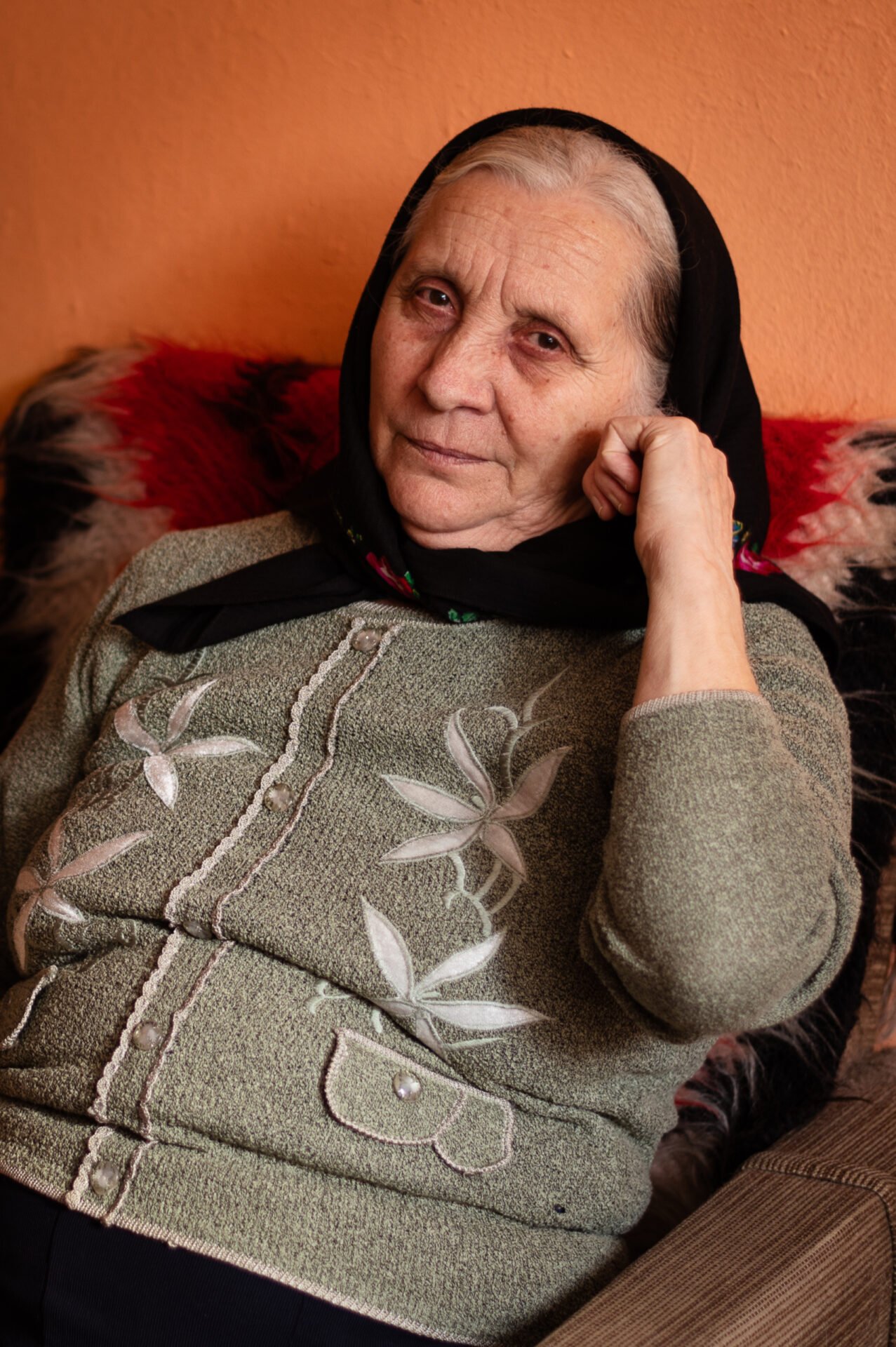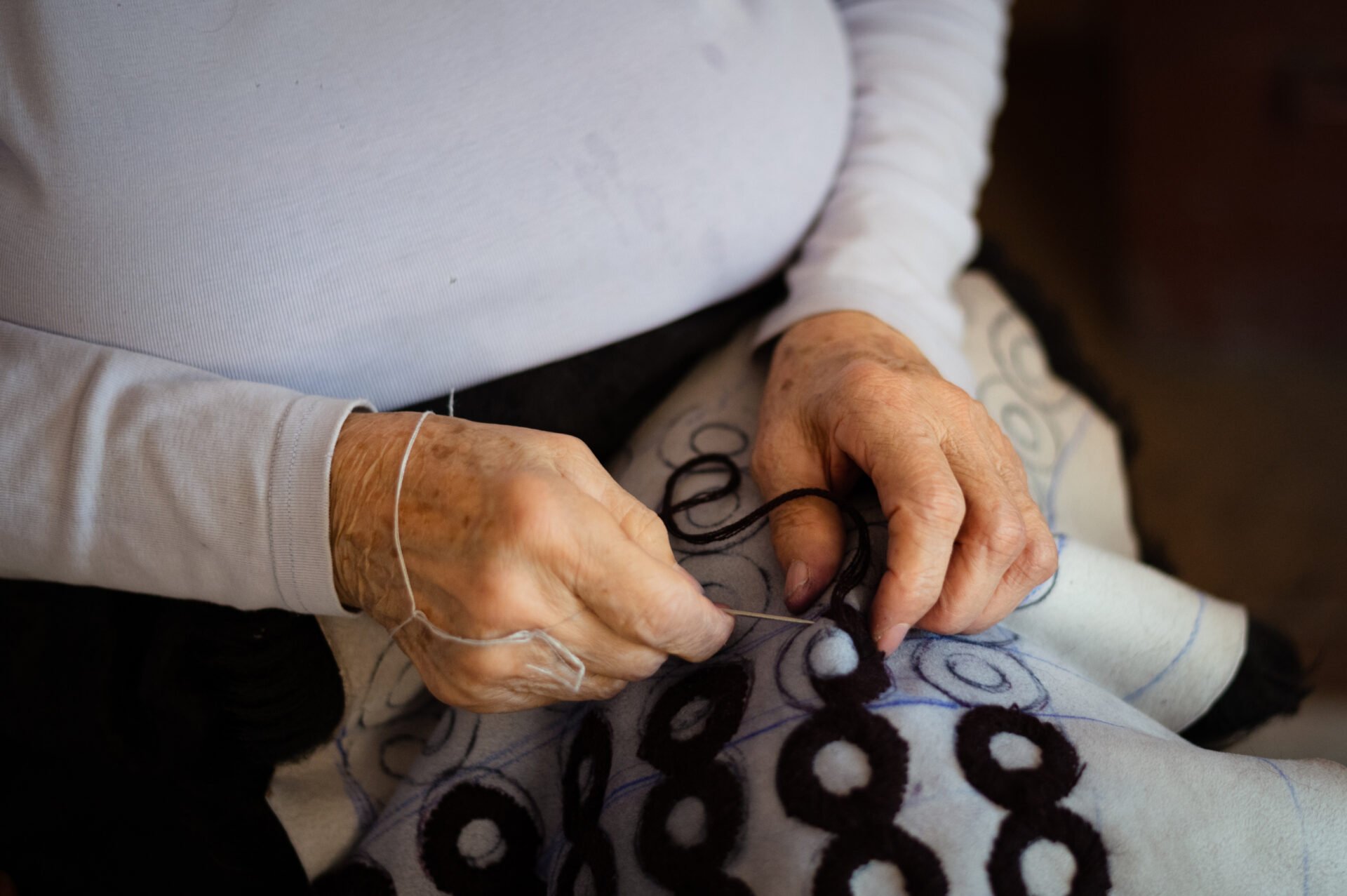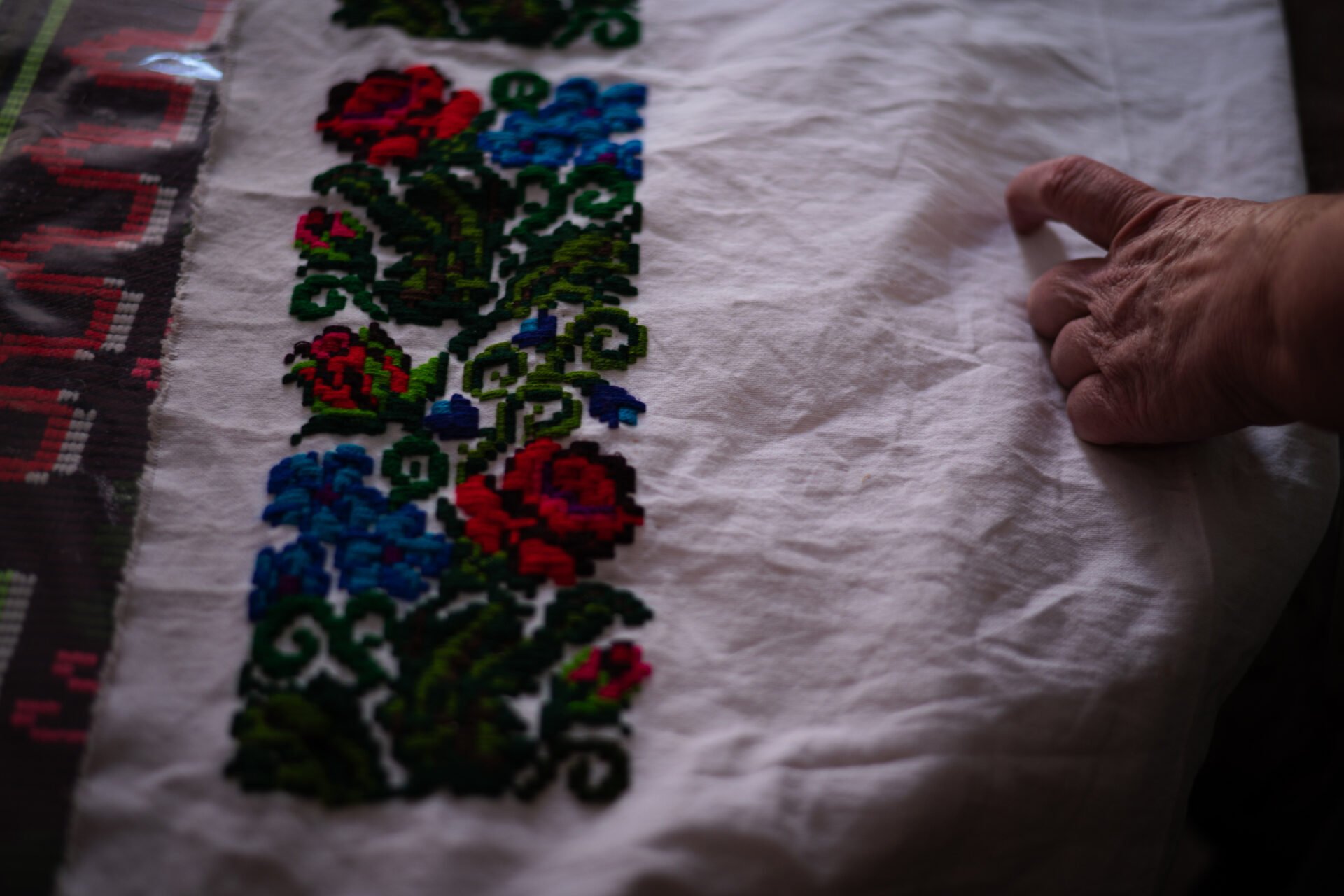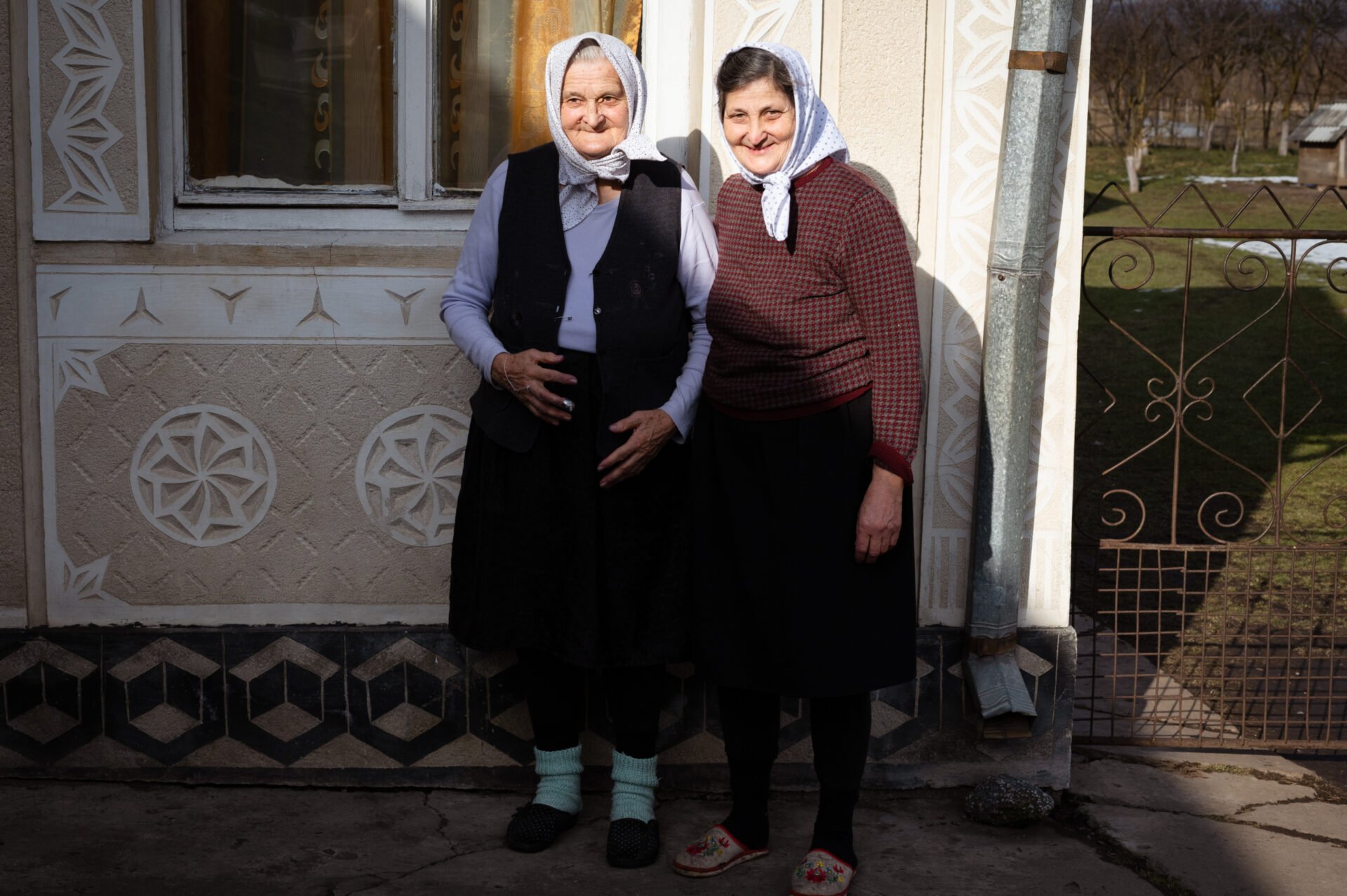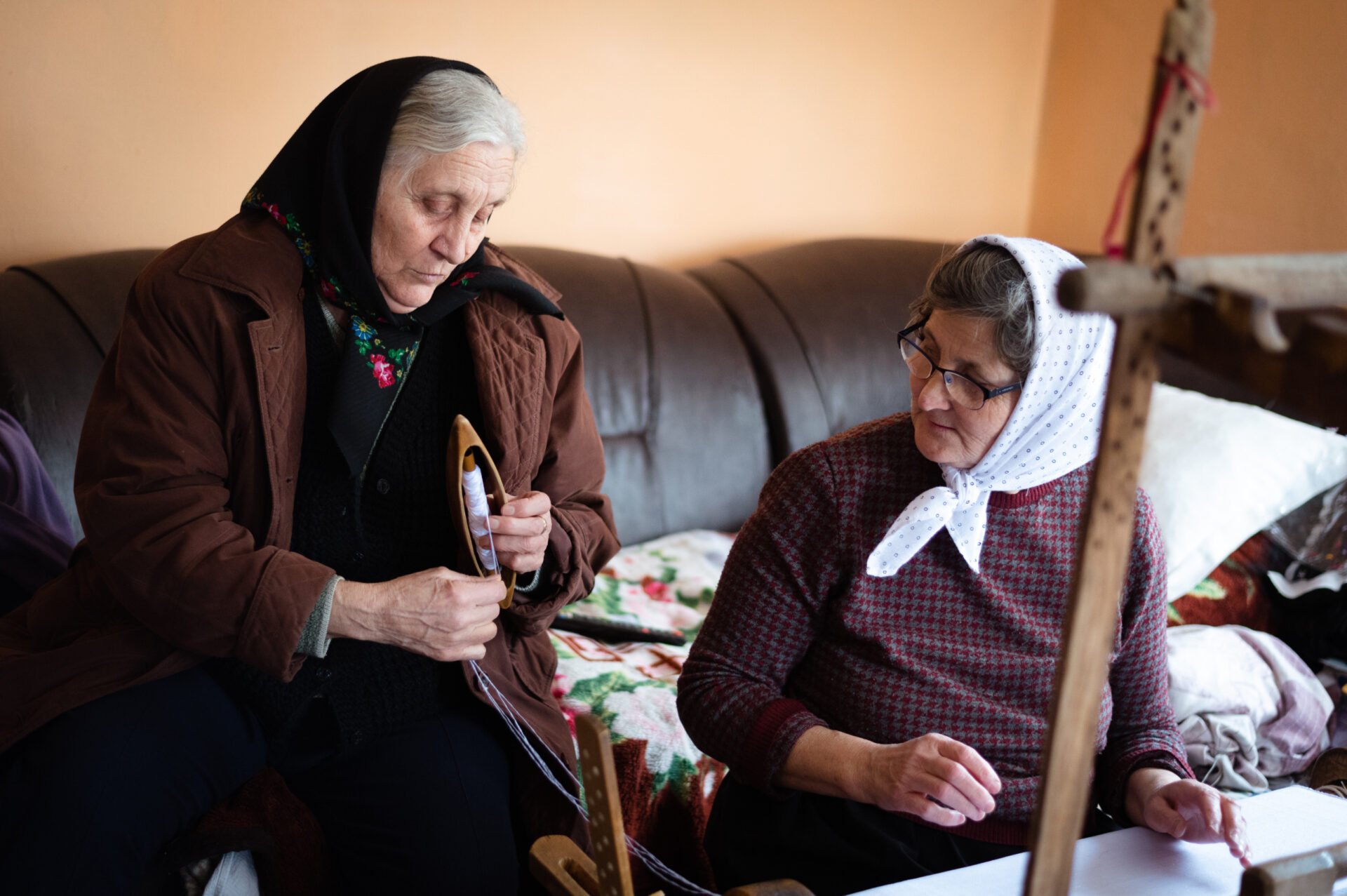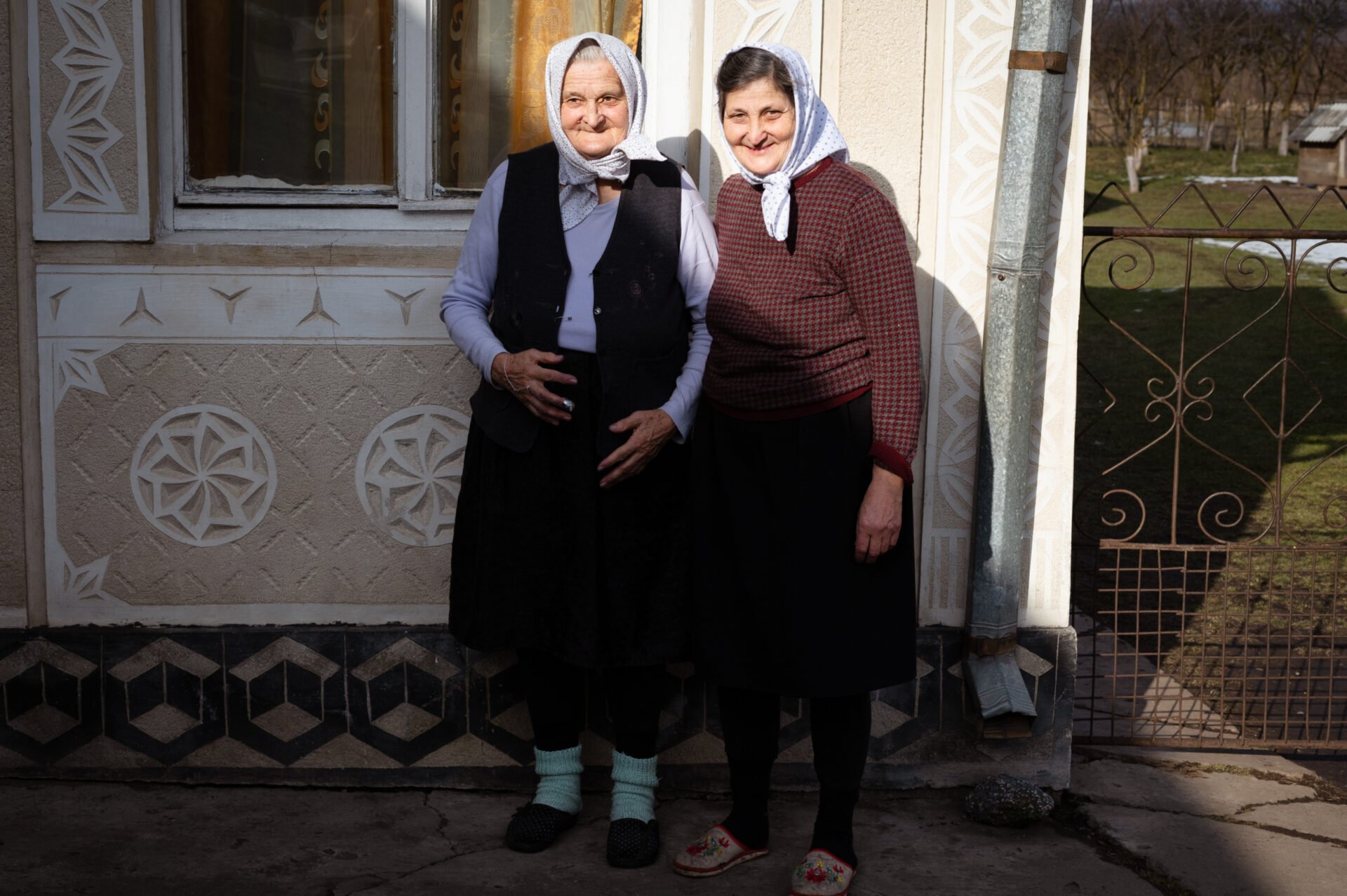Words & Photos: Lucía Blasco
February 2025
Anuța Vereta’s hands move fast behind the weaving loom that takes most of the space of her humble living room in Săpânța. Sitting tight in a small backless chair, she puts her reading glasses on, adjusts the headscarf around her neck, and places her floral slippers on the foot pedals that open and close the sheds, putting the machine into motion – a război de țesut, as called in Romania. The wooden beast creaks loudly as the 61-year-old pushes the threads back and forth, moving the bar from frame to frame energetically. It’s a delight to watch her weave. She is making a cotton shirt. “I usually make these clothes for my family and friends,” she says when I ask her if she sells the designs. “But if someone wants to buy them, I’d be happy to sell them!” She smiles. Her mum Irina smiles back shyly from a corner chair. She knits the pattern of a winter vest, her eyes only leaving the task at hand to look at my camera with a sweet, tender gaze.
A friend, Maria Ștețea, 75, has come to visit. Seated on the couch, she gives conversation to the weaving ladies. Maria lives alone with her dog, Bălau, and she loves spending time with her neighbors. It is easy to imagine them in long winter evenings together, sharing a palincă (a strong fruit brandy typical from the area). It’s all about the community and slow life here in Săpânța. In this rural town – home to the world’s tallest wooden church and the touristy “Merry Cemetery” – time is in no hurry.
Seeing these women keeping the ancient weaving tradition alive makes you travel in time. Across Maramureș, the fabrics have both a decorative and a household role, and the techniques used vary. About 46 kilometers away from Săpânța, in the village of Breb, Maria Hotea, 56 – who goes by her nickname “Vlâdica,” and is known for her delicious papanași (Romanian cheese doughnut-shaped sweets) – makes wool clothes. She creates colors using plants. “Wool is a complicated textile. It takes time to work it,” she says. But that’s not an issue for her. A hundred kilometers away, in the tiny village of Suciu de Jos, Maria Bota, 60, makes a zadie, a traditional apron. She draws the patterns by hand and keeps them all in a small notebook she proudly shows. The colorful floral designs repeat on the walls and decorations of the houses we see across the region. They make part of the local customs of Maramureș that might soon be lost as the new generations migrate, leaving behind slow ways of life for the fast-paced modern world. In the meantime, Anuța will keep weaving on her machine. It’s snowing outside. There is no rush.
